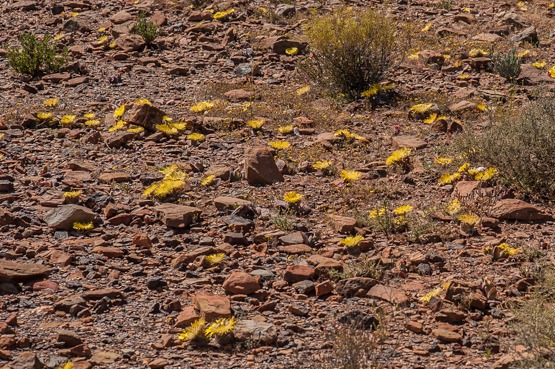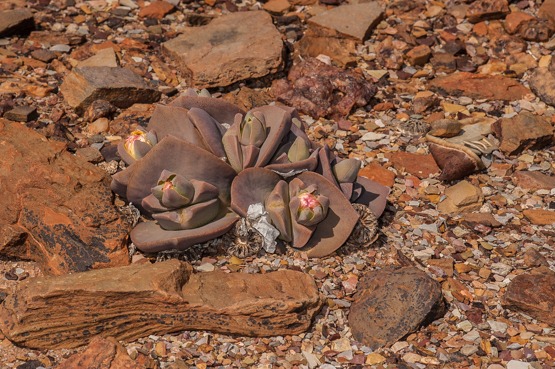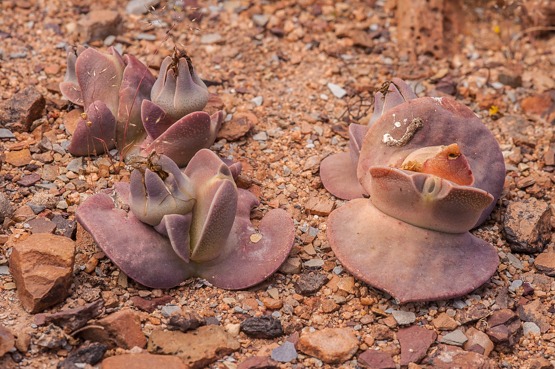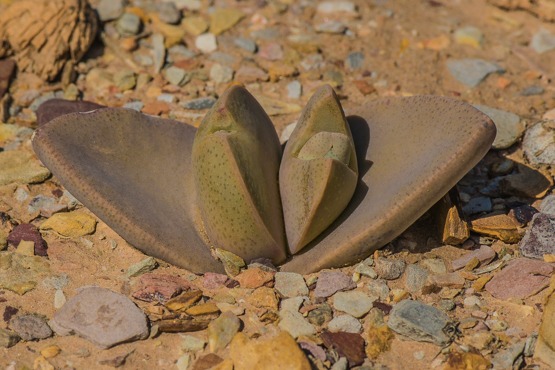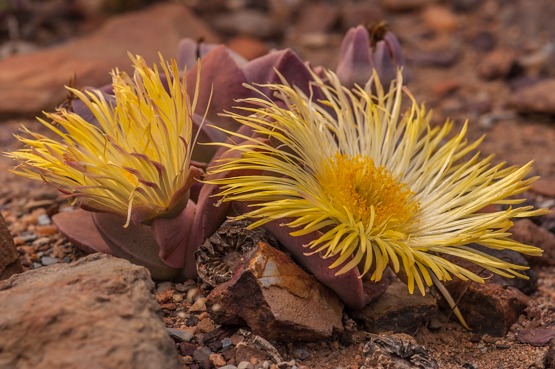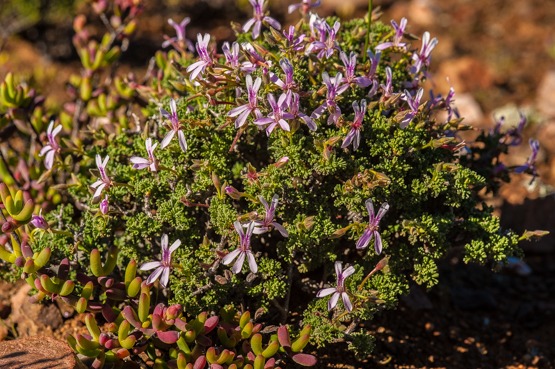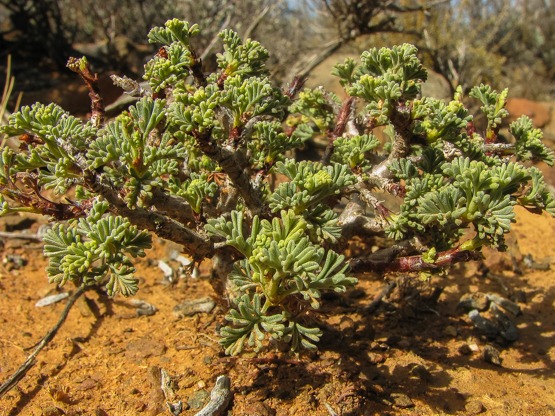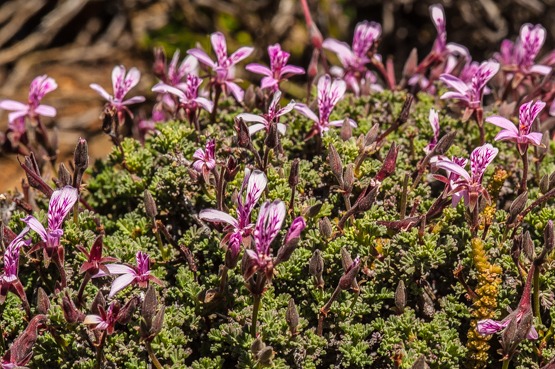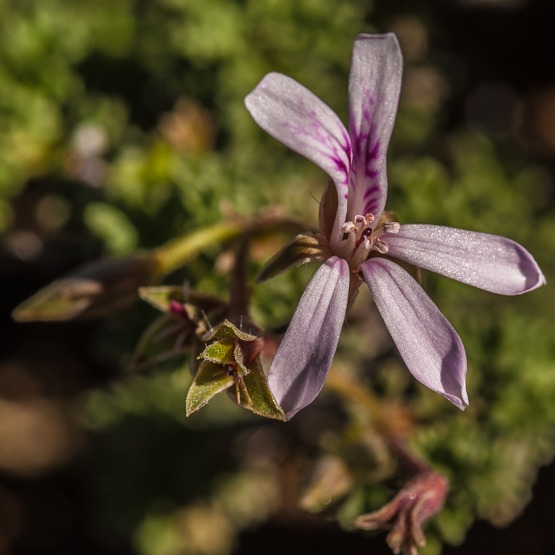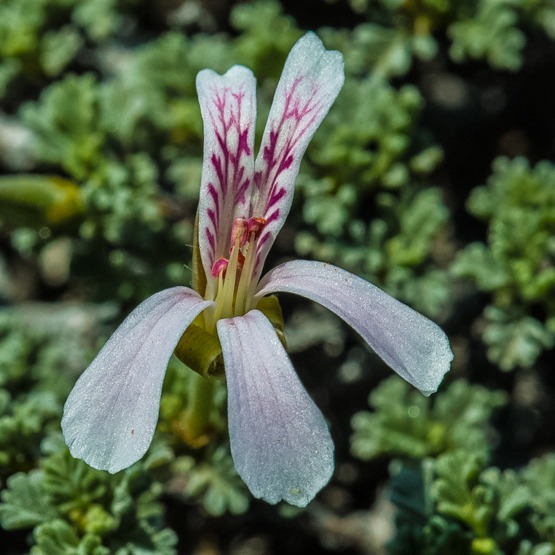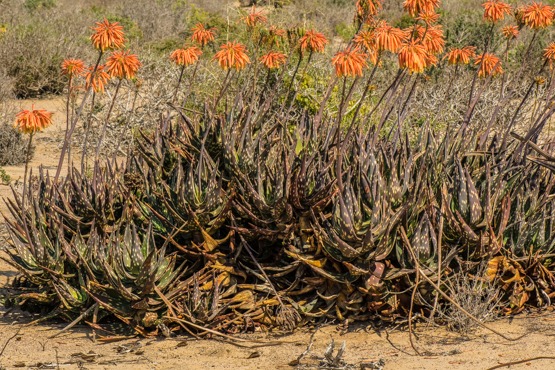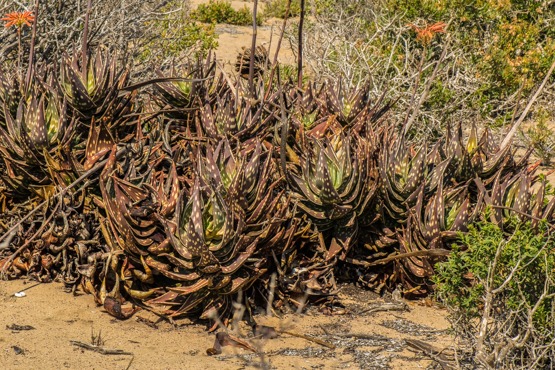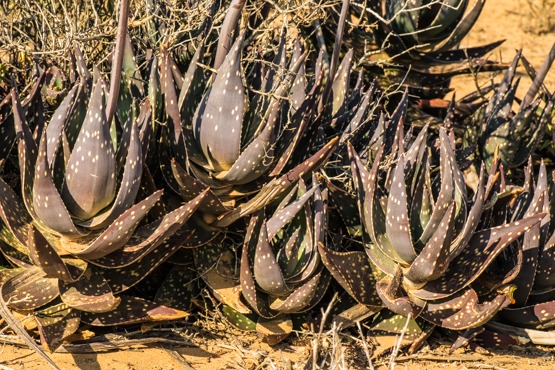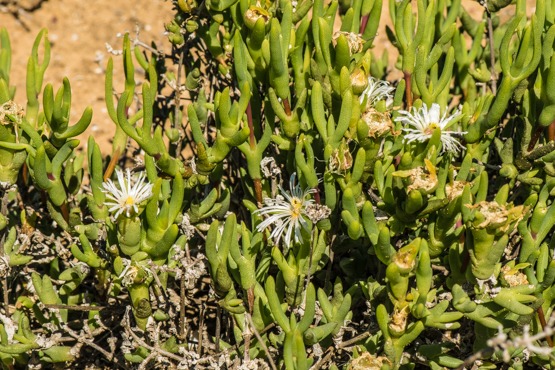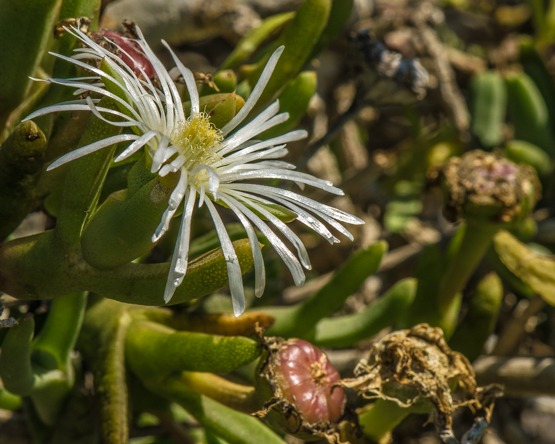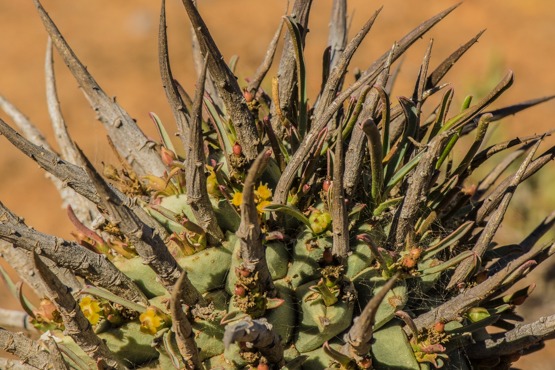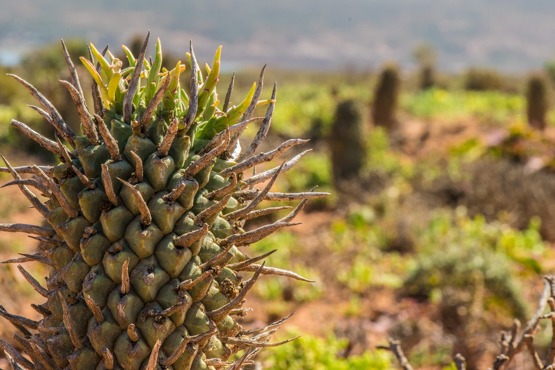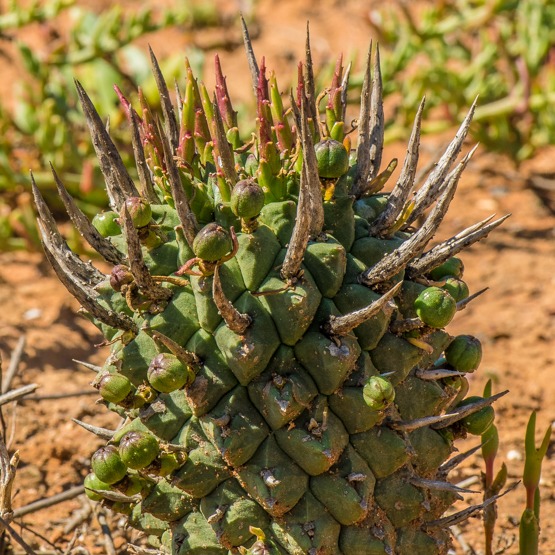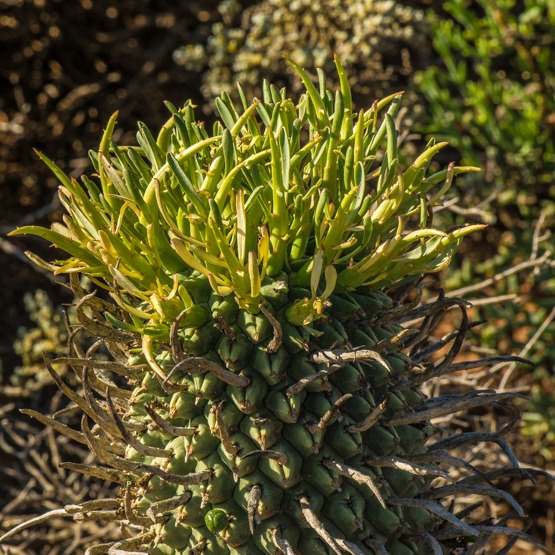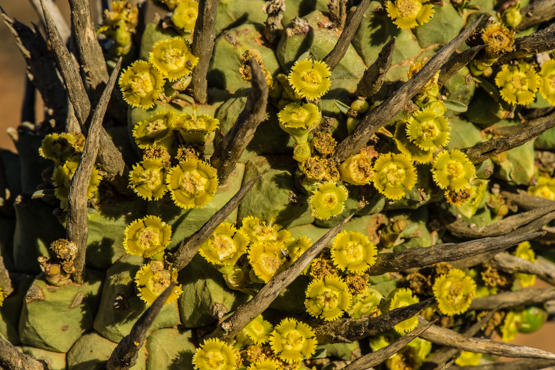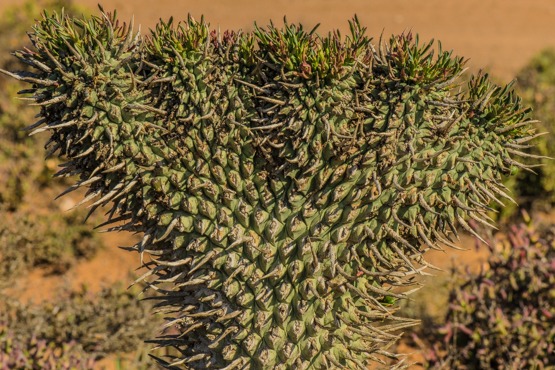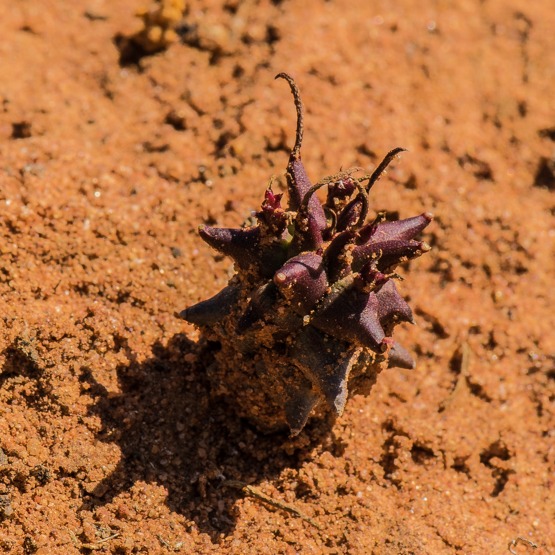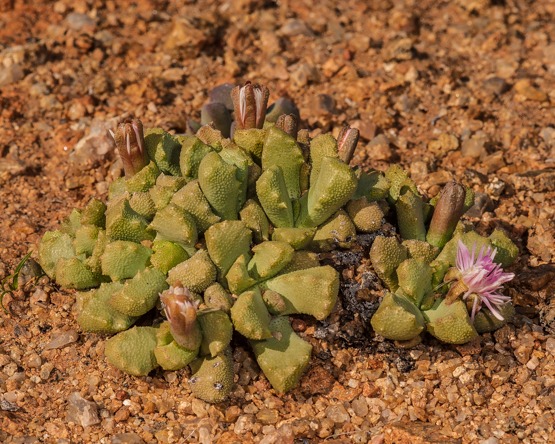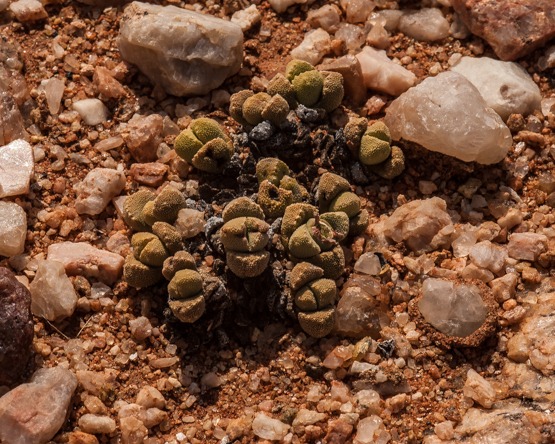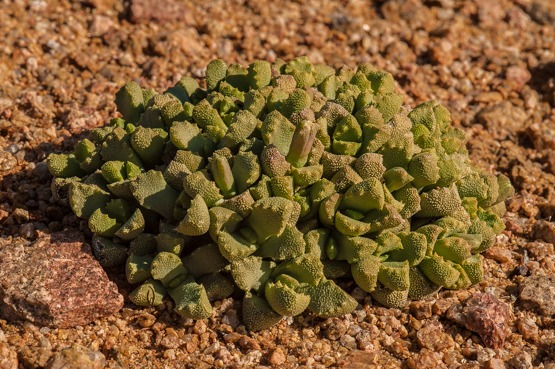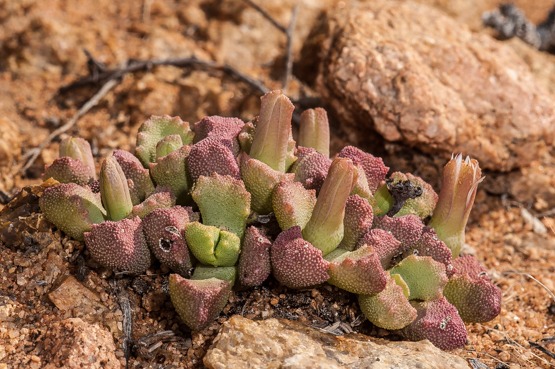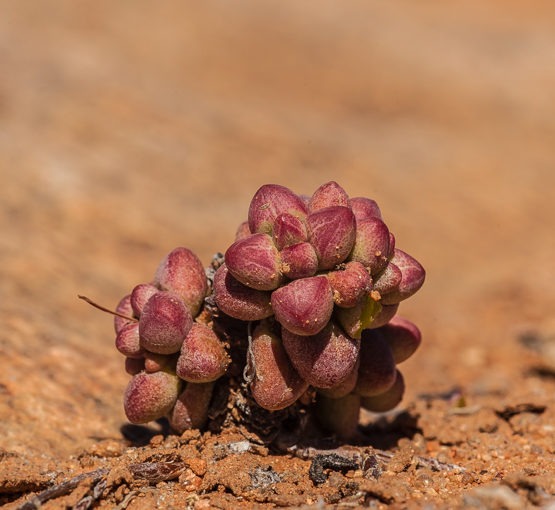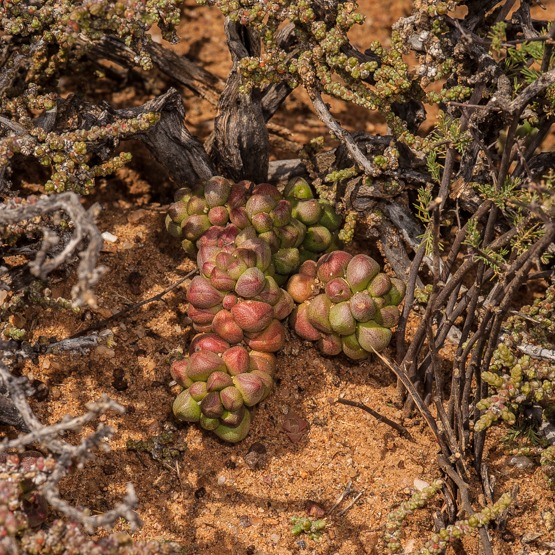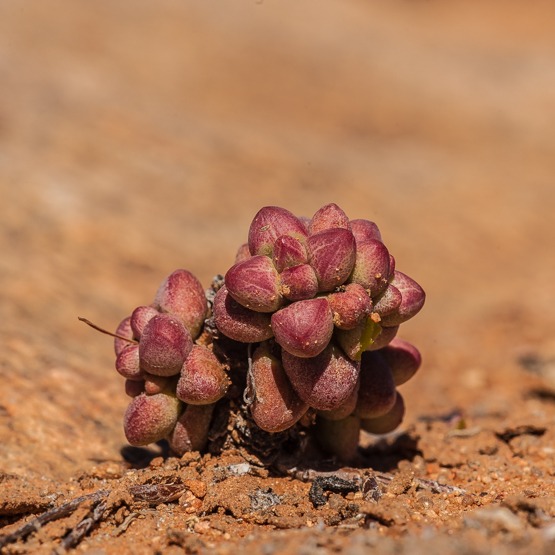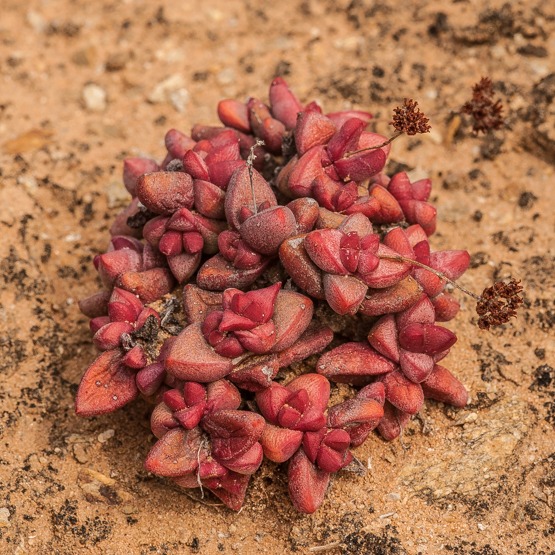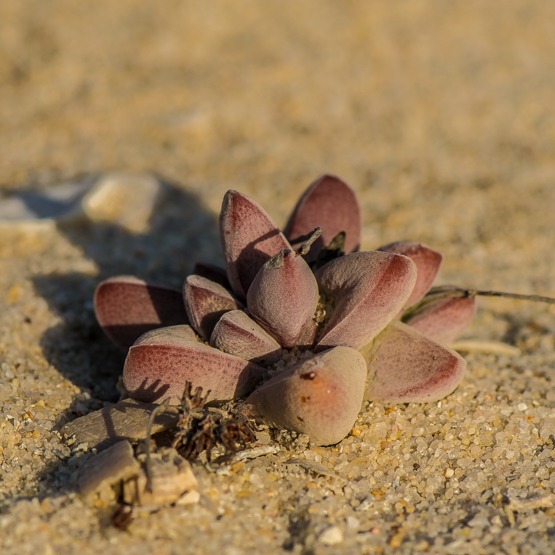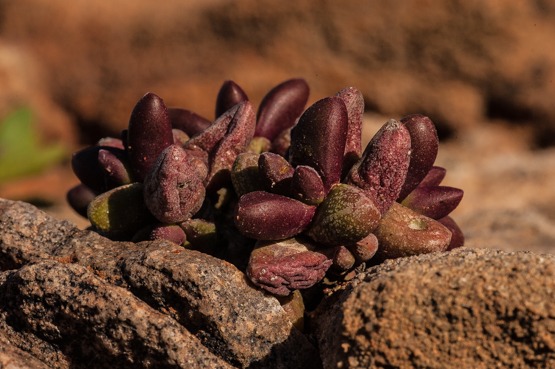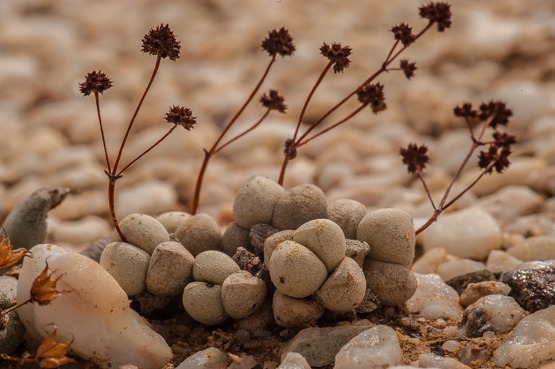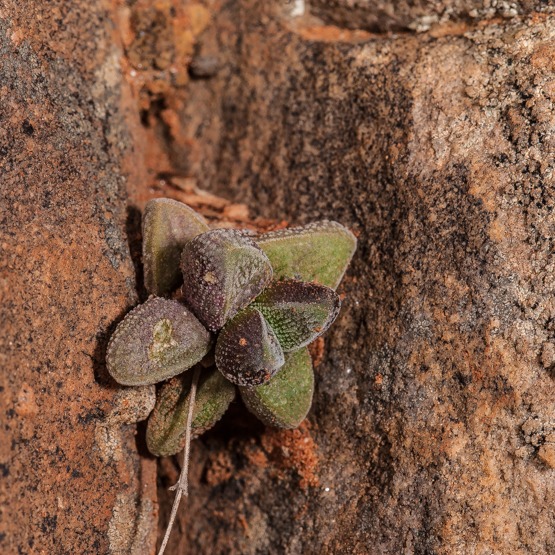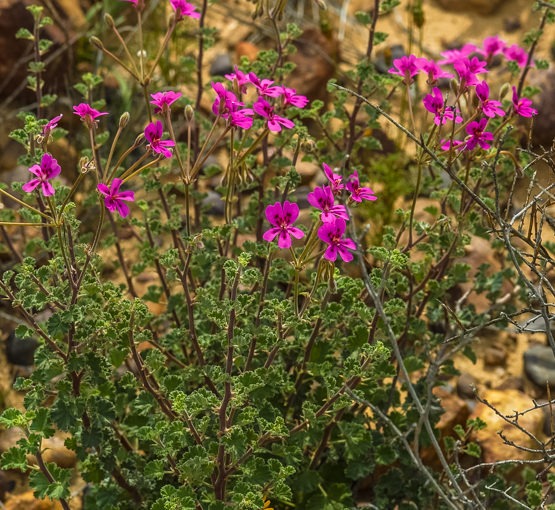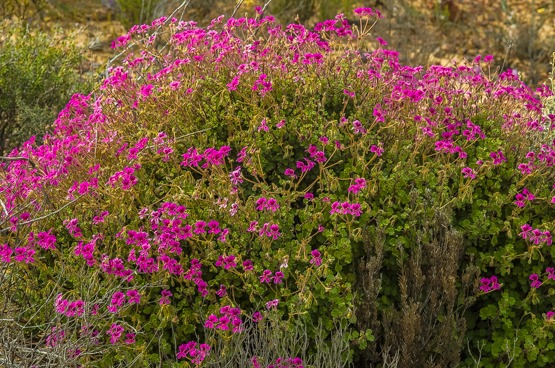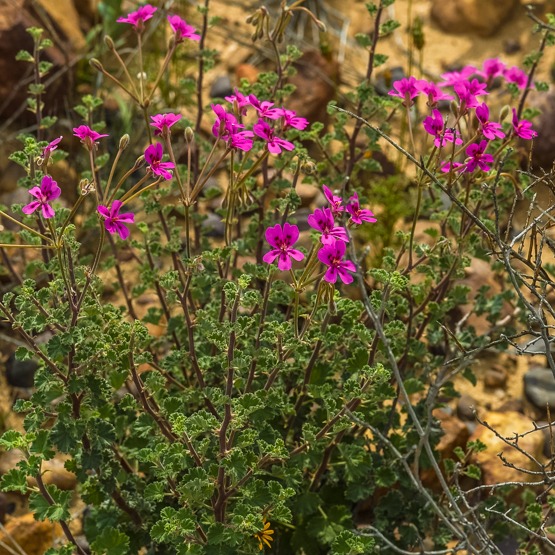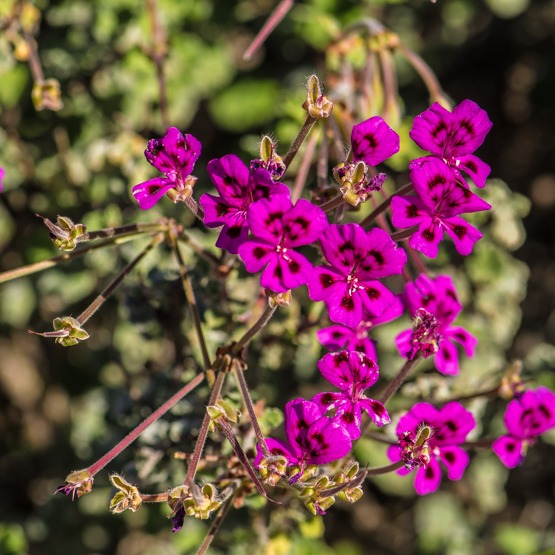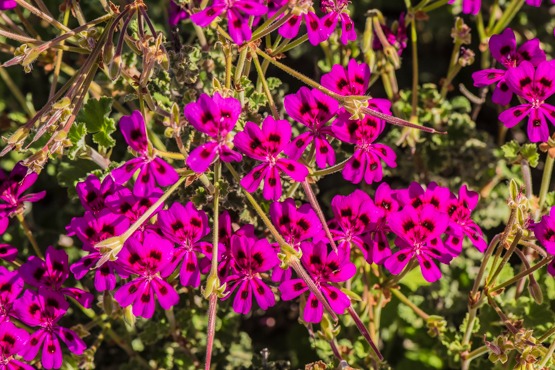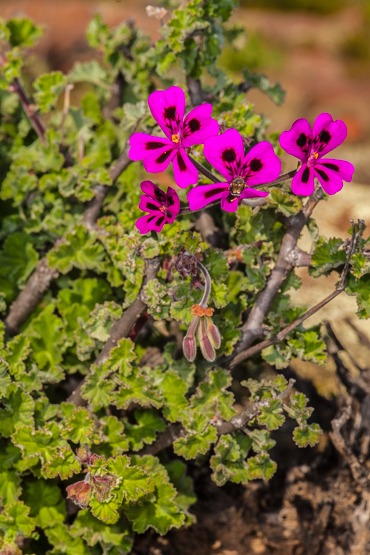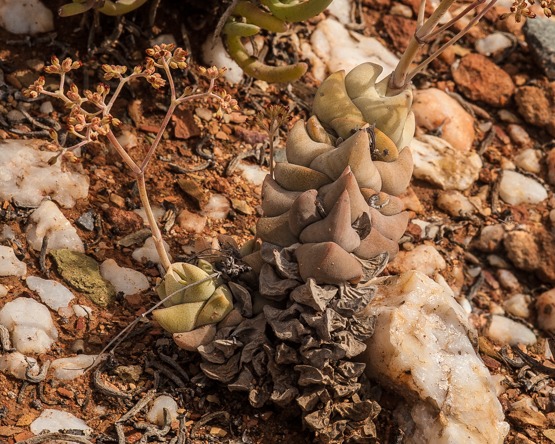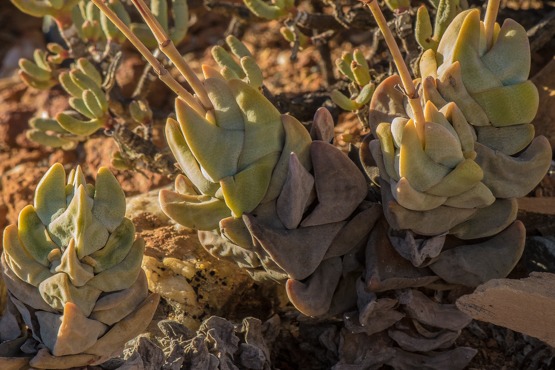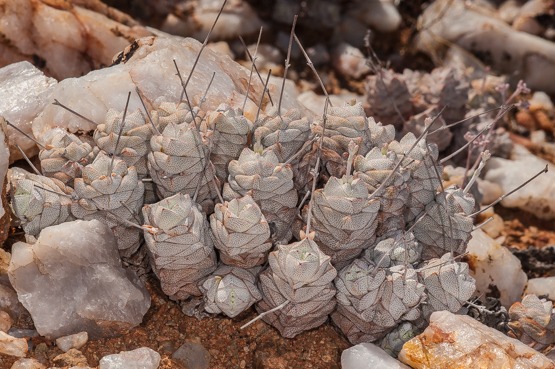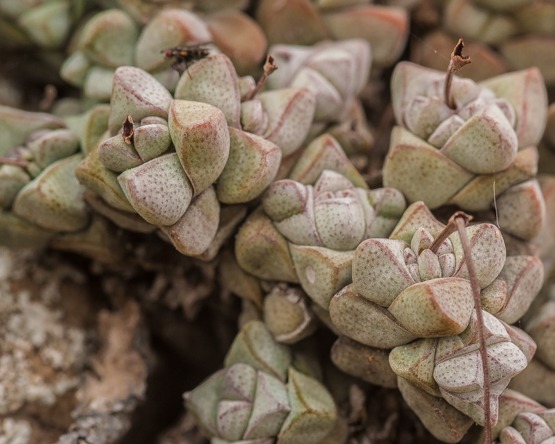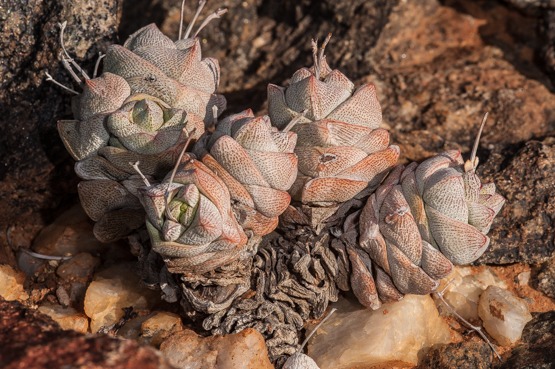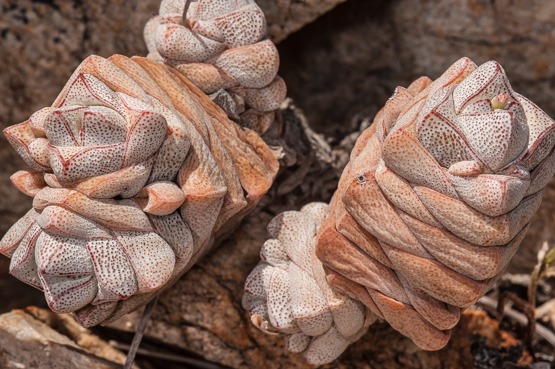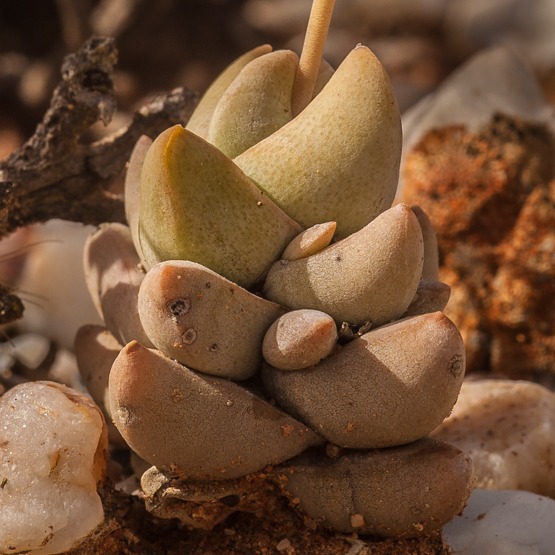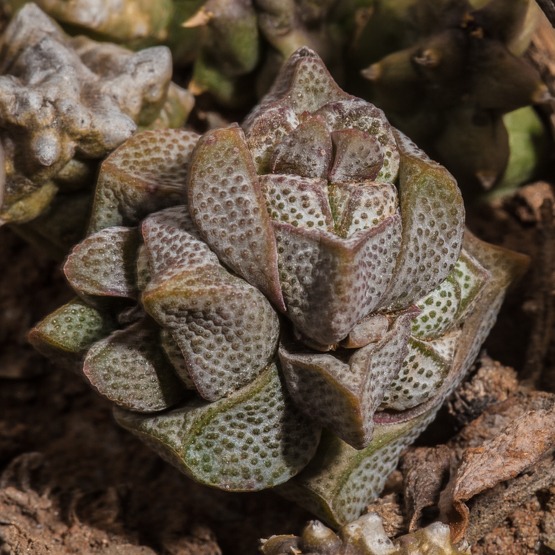Normally when reviewing a book, one tends to compare it to others on the same subject, but in this case, there literally is no comparison. It may be of interest to know that the book came to life thanks to nearly 700 pre-orders.
The following will hopefully give you some idea of the scope of this book, which is arranged in five parts.
The first chapter, Diversity, describes what the Namaqualand plants have to offer to our five sense-organs.
The second chapter, Species, shows a large selection of Namaqualand succulents and geophytes.
In the third one, Habitats, the main regions of Namaqualand as well as 3 neighboring regions ( Cederberg, Bokkeveld and Bushmanland) are described.
Survival looks into some of the strategies that enable succulents to survive in Namaqualands harsh environment and the last chapter goes into the astonishing methods of plant reproduction, in particular, those relating to insect pollination.
Over 1100 beautiful photographs support the text. I would have loved to see the pictures printed on better paper, but that is a minor drawback compared to the wealth of information and inspiration the book has to offer.
All in all, with its combination of habitat photography and popular science, this is a unique publication that will almost certainly delight anybody interested in succulents as well as those passionate about nature and arid regions.
And last but not least: it is just a great pleasure to come across a book by someone who is not only really interested in his subject but also able to get that enthusiasm across.
The book contains 350 pages and is hardbound. The price is 39 €, but buyers in SA pay a special price of R590 (about 35 €).
To order:
write to longitude110@gmail.com and you will receive the details for an EFT payment. Otherwise, books can also be picked up in Stellenbosch (Dorp Street) and Cape Town (Newlands) upon prior notification. Books will also be stored at Kirstenbosch, at the Rooiklip nursery (Swellendam), NamaquaLodge (Vanrhynsdorp), Bagdad Café (Vanrhynsdorp-Nieuwoudtville road), Kamieskroon (cell phone details given by email), Springbok lodge (Springbok) and at Nigramoep slow living Guestfarm (NW of Springbok).
Special editions (signed copy for 49 € and collector’s edition for 89 €) can be ordered from the website www.namaqualand-succulents.com.
